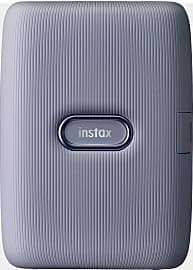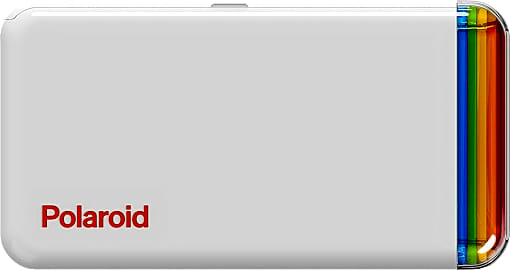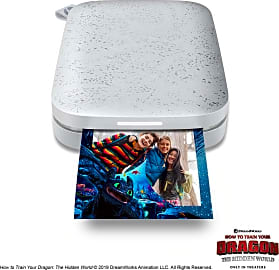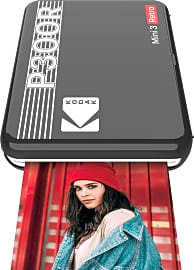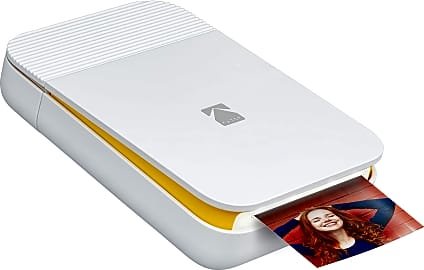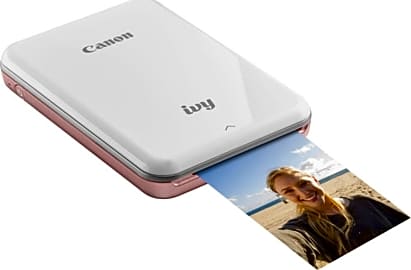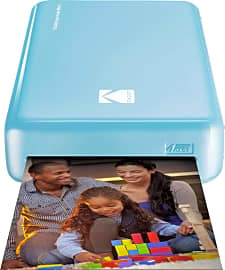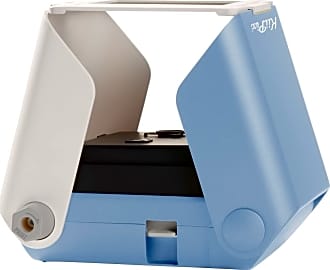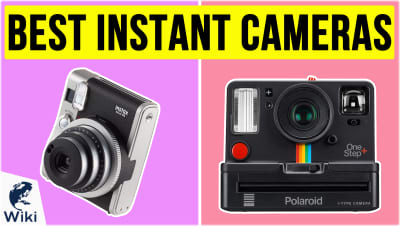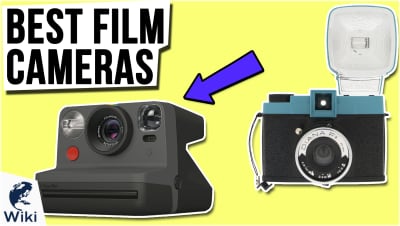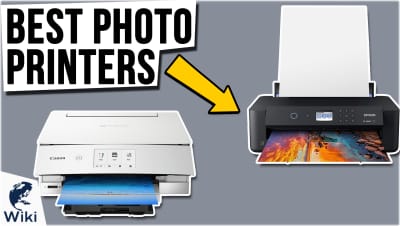The 10 Best Instant Printers

This wiki has been updated 38 times since it was first published in September of 2016. So you want to give your grandma that awesome photo of you and her at the family reunion, but she doesn't really understand how to use modern technology. With one of these micro printers, you can use your mobile phone to make her a hard copy instantly. They are designed to be very portable, generally compact enough to slip into a pocket or be carried in a small purse. When users buy our independently chosen editorial selections, we may earn commissions to help fund the Wiki.
Editor's Notes
September 23, 2020:
The popular resurgence of instant photography has continued to grow, however, not everyone is a photography enthusiast who's willing to carry a bulky Polaroid around their neck. These clever standalone printers produce the same fun, physical novelties, but are much more versatile. When paired with a smartphone these devices allow you to print photos long after they're taken, create multiple prints of the same image, and even edit and preview pictures before printing them, all of which are features that are hard to replicate with an analog camera.
There are several types of processes used among instant printers, all of which offer certain pros and cons, but dye-sublimation stands out from the others as the clearly superior method in terms of raw image fidelity. As this technology has been further perfected several new printers that utilize it have been released. We decided to remove a few outdated Zink-based printers in order to make room for the Canon SELPHY QX10, Polaroid Hi-Print, and Kodak Mini 3 Retro, all of which are dye-sublimation models that offer sharpness and color reproduction previously relegated to full-size photo printers.
The color cast and blurriness issues that frequently affect Zink printers may seem unacceptable now that dye-sublimation has established a more significant presence, but we've left a few on our list and even added a more recent model, the Kodak Smile. This is because Zink offers two very specific advantages. These selections tend to take about half as long to print than their dye-sublimation counterparts, and their per shot price comes out to about half the cost as well in many cases. These features combined with a picture quality that is satisfactory for many users keeps them in the mix as a reasonable middle-ground choice. However, if these features sound interesting you may as well look at analog options such as the Fujifilm Link, which take those abilities even further. It prints images in an astoundingly quick 12 seconds, and though the pictures take a minute or so to develop outside the printer this feature is still great for sharing many photos at once, since it can continuously produce up to 100 pictures at this pace on a full charge. The images created by this printer are lower in quality than Zink prints in an objective sense, but whereas Zink photos can give off the affect of a malfunctioning printer, Instax photos almost begin to take on an artistic quality with their vignetting and Polaroid-esque fuzziness.
March 29, 2019:
Traditional printers are large, bulky things you could never take with you on the go, but these instant printers are a different animal entirely. They were specifically designed to be compact devices that are just as easily-carried as a smartphone. While many of these items offer a similar image quality, the Polaroid Mint landed the top spot because of its ability to perform 50 print jobs on a single charge, which outlasts all other models. If you feel that a 2" x 3" picture will be too small for you, which is the standard for the majority of the options on the list, you'll want to take a look at the HP Sprocket Plus, which is capable of 2.3" x 3.4" prints.
The HP Sprocket 2nd Edition and Prynt Pocket have cool augmented reality features that let you save a video along with an image. Later, you can use any smartphone with their companion app to view the pictures and it will make them come alive. If print speed is a top priority for you, then you'll want to consider the Fujifilm Instax SP-3. Unfortunately though, it is significantly larger than any other model, so you definitely won't be sticking it in a pocket.
A Brief History of The Instant Photograph
Today's instant photo printers would not exist without the instant photographic technologies that preceded them.
Today's instant photo printers would not exist without the instant photographic technologies that preceded them. First developed by Edward Land in 1947, instant photographs, like the printers that now use the term, are not actually instant. Instead, they use a rapid photochemical process contained within the film itself that takes just a few minutes to develop. When compared to the time it takes to get film developed and wait for prints to come back, however, they may seem nearly instantaneous.
The first instant films produced both a positive and negative image. After development, you'd have to peel them apart and the negative could be re-used to make enlargements and contact prints in a darkroom. As the technology developed and became more popular among casual photographers, who often had no use for the negatives, positive-only versions took over the market. The version that produced a square image with a white border around all sides is what most people know as the Polaroid. That specific style of film, however, was not introduced until 1972.
Until 2008, when it ceased production of all instant films, Polaroid dominated the market. Unfortunately for them, the rise of digital photography resulted in a rapid decline in sales into the 21st century. While companies like Fujifilm have picked up the technology in recent years, marketing instant film to young people as a hip, retro trend, digital continues to dominate the market.
While it has spelled disaster for the film industry as a whole, digital photography has drastically improved access to what we call instant photographs. The possibility of holding a physical copy of a picture in your hand within seconds of taking it has become far more accessible, especially with the advent of wireless printing.
Today, printers designed explicitly for that purpose are more accessible than ever. In fact, they're smaller and more portable than most Polaroid cameras, even when combined with a smartphone or compact standalone digital camera. There are ink-less options, as well as those that print on standard photo paper, which brings the cost per print down considerably. Best of all, you can be selective about the images you choose to print, since they offer the option to review your selection before printing. While some may miss the element of surprise inherent in a traditional instant photograph, the end result is prints that are worth keeping every time.
How Digital Photography Changed the Game
Though the technology was neither widely useful nor accessible to the public for several decades, the first digital photograph actually dates back much further than you might expect. In 1965, NASA used a digital process to capture an image of Mars from an unmanned spacecraft. About ten years later, the first digital camera was built by an engineer at Kodak. While not intended for mass production, it successfully captured very low-resolution, black and white images to a cassette tape.
While not intended for mass production, it successfully captured very low-resolution, black and white images to a cassette tape.
It wasn't until 1988 that digital cameras were able to create files recognizable by computers. A few years later, in 1990, the first one hit the consumer market. Over the course of the next two decades, the technology got cheaper, more advanced, and, most importantly, more compact. Today, billions of people carry cameras with them at all times, mostly in the form of cell phones.
This technology is what has enabled the re-emergence of instant photography. Without such ubiquitous and highly portable cameras, the compact printers that make today's instant prints possible would not be useful. High speed wireless connectivity provides another major boost to the process.
While not everyone values physical prints, today's instant printers have tapped into a large market. They make it possible to share keepsakes from an experience in real time, and are also useful to fans of photo albums and scrapbooking. Best of all, you don't just get one copy. You can print and re-print to your heart's delight, until everyone in the picture has a copy to take home with them. You can also perfect the images as you go with editing tools on your camera, computer, and even on the devices themselves. All this results in better and more shareable printed photographs.
Uses For Instant Printers
There is no shortage of reasons to buy an instant printer. Perhaps you're driven by nostalgia for the instant photographs of the past. While you won't get to enjoy the process of watching them develop before your eyes, the images these printers make are high-quality, and make great mementos.
For consumers, the appeal of a physical photograph is more than just nostalgia, however.
For consumers, the appeal of a physical photograph is more than just nostalgia, however. While digital photo frames do have marginal popularity, most people prefer to adorn their desks, refrigerators, wallets, and walls with the real deal. Sending a loved one a file just doesn't compare to handing them a print. And while many people own color printers for their home, they're primarily designed for documents and not images. Those that can produce photographs are slow, complicated, and expensive, not to mention the sizing options may be awkward or limited. Instant printers take the hassle out of producing beautiful and sharable prints.
For businesses, instant printing technology has plenty of marketing potential. If you're creating a branded experience, for example, what better way to send your audience home than with an image of themselves in the environment you created for them. They can also be useful in retail stores, theme parks, and much more.
When it comes to these printers, the possibilities are endless, and the technology is only improving. The quality of the images they can produce gets better every year. The speed at which they print is increasing in tandem. At this rate, it's only a matter of time before they can make truly instant prints a reality.


